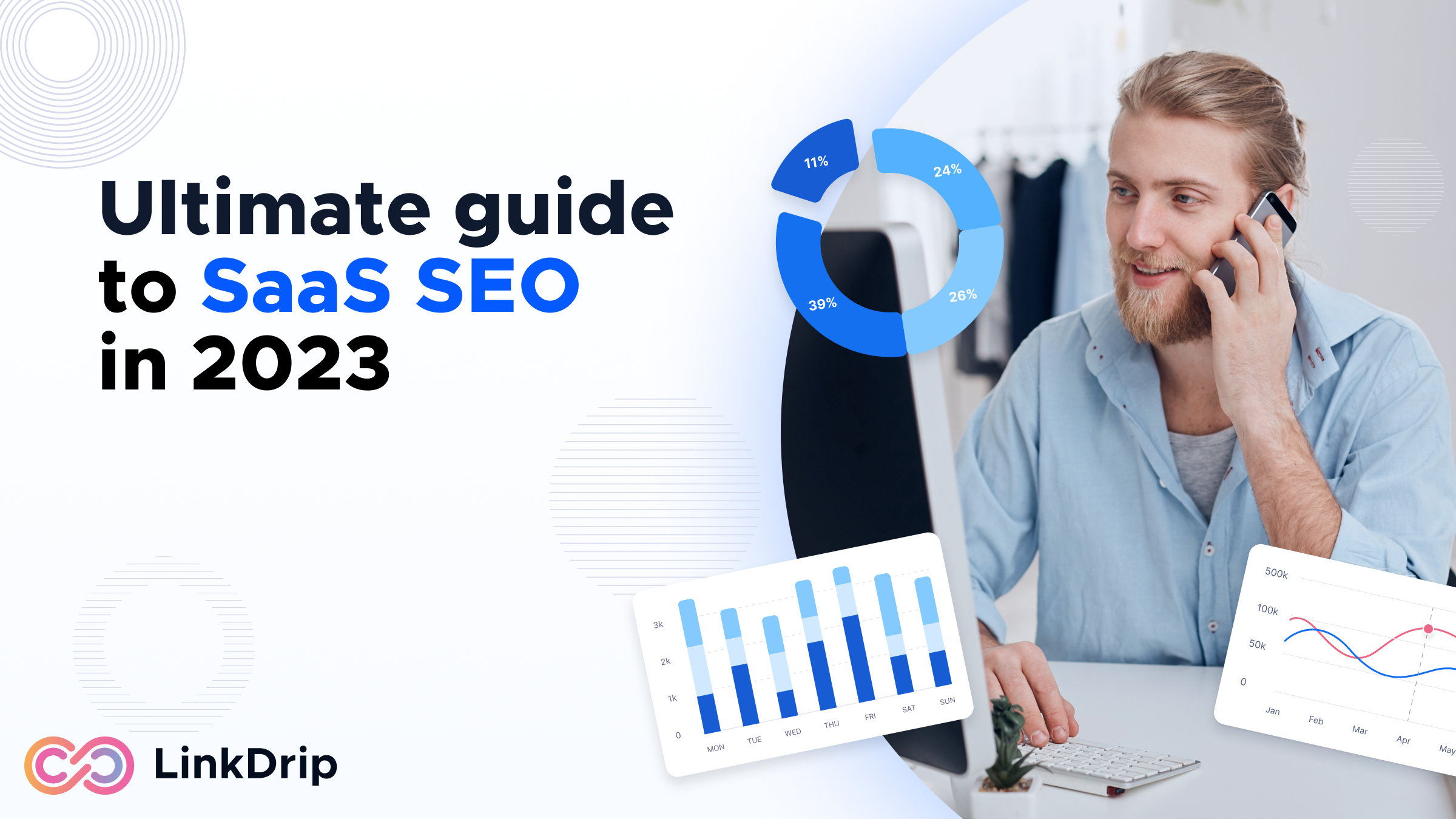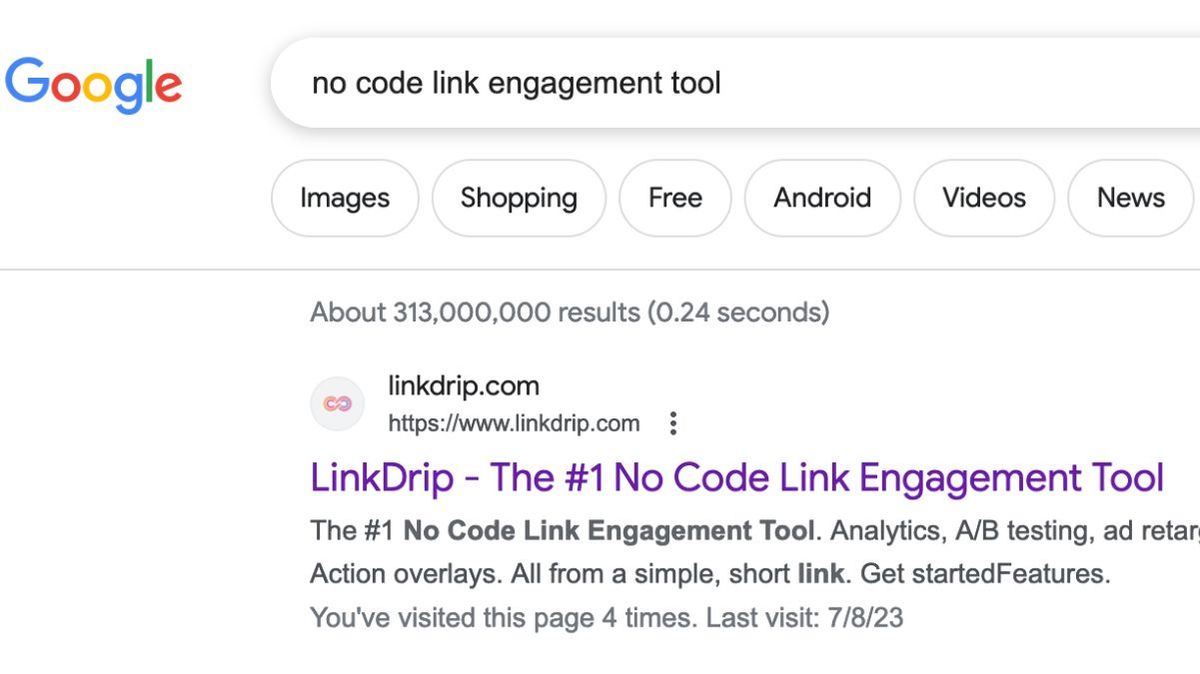
Demystifying SaaS SEO: An Essential Playbook for 2023
By Frank Vargas
Nowadays, the Software as a Service (SaaS) industry is booming, hitting an impressive $195 billion mark. But before you jump into this wave and start your own SaaS venture, pause for a moment. Because merely having an innovative product or a brilliant Saas idea is not enough to secure success. With many similar products out there, you need to differentiate yourself. And that's where the magic of SaaS SEO steps in.
While you could bring in professionals to manage your SaaS SEO, keep in mind that it might leave a considerable dent in your budget. A savvy alternative? Roll up your sleeves and start mastering the basics yourself. So, if you're braced to make waves in this bustling market, this SaaS SEO guide has your name on it. We're here to navigate you through the ins and outs of SEO for SaaS startups in 2023. So grab your notepad and pen — it's time to immerse ourselves in the captivating world of SaaS SEO.
What is SaaS SEO?
SaaS SEO, which stands for Software as a Service Search Engine Optimization, is a specialized type of SEO dedicated to enhancing the online presence of SaaS businesses. Simply put, it's all about making your SaaS business rank higher in search engine results. This can bring in more website traffic and potentially attract more customers.

Generally, a good number of SaaS products, especially those in their inception and growth stages, tend to rely heavily on paid advertisements and affiliate marketing for quick returns. This is particularly relevant for startups under obligations to their investors and must rapidly generate a consistent monthly recurring revenue stream.
However, it's not a sustainable strategy to depend solely on these channels, as they can be expensive, and your customer acquisition ceases the moment you stop advertising or making payouts to affiliates. That's when the realization hits SaaS founders and marketers about the need for a stable, organic, and long-lasting source of traffic and paid customers, steering their focus toward search engine optimization.
A well-implemented SEO strategy offers SaaS founders a sense of stability and security amidst the chaotic revenue growth process. It provides a sort of safety net for the company's revenue, so when times are tough and paid advertising becomes unaffordable, the steady flow of organic traffic can still assist in gaining new customers. If you're still unsure about dedicating your marketing team's time and efforts to SEO for your SaaS service, we'll discuss several benefits that might help sway your decision.
Importance of SaaS SEO strategy
When you decide to launch your SaaS business, it's akin to breaking open your piggy bank, investing heavily in website development, graphics, and, most critically, the product itself. However, an essential factor you may overlook is SEO. And here are some solid reasons that you shouldn't compromise on this aspect,
1. Boosting Online Presence
A well-executed SaaS SEO strategy helps your website climb up the rankings, making your SaaS product more easily discoverable by potential users. The benefits of this amplified online visibility are manifold.
Over time, this increased visibility and traffic can lead to higher brand recognition, a larger user base, and, eventually, increased revenue for your SaaS business. Over 25,000 SaaS products are in the market, and only SEO can help you stand out. For instance, if users search for a link-shortening tool, your product should be the first one they see.
2. Cost-Effective User Acquisition
Instead of bearing the expenses for each click or impression, SaaS SEO entails fine-tuning your website for keywords and phrases your potential audience will likely employ when seeking your services. Once your site begins to rank well for these terms, it will continue to attract traffic without the need for ongoing ad spend.
Moreover, SEO leads often have higher conversion rates. Since these users are already searching for a solution to a problem, they are in a ready-to-buy mindset. By delivering the right content at the right time through SEO, you effectively guide a motivated user to your virtual doorstep.
3. Building Trust and Credibility
A high ranking on search engine results does more than just enhance your visibility. It instills trust and endorses the credibility of your business. Users naturally tend to trust those businesses that appear higher in their search results.
Moreover, technical aspects of SEO, like a secure website (HTTPS), fast loading times, easy navigation, and a user-friendly design, contribute to a seamless user experience. When people have a positive experience on your site, their trust in your brand is strengthened.
4. Securing a Competitive Edge
In this online landscape, 97% of people run search inquiries to get solutions to their problems. And in this situation, rising to the top of search results becomes your golden ticket to increase your sales. As your website climbs higher in SERP, it not only boosts your visibility but also gives the impression that your business is a leading authority in the industry.
With SEO, you can also target specific niches within your market using long-tail keywords. These keywords are often less competitive and more targeted, allowing you to attract highly qualified traffic. This strategic approach helps you stand out among competitors and reach segments of your market that others may be overlooking.
Complete SaaS SEO strategy
Now, let's delve into the heart of the matter—your complete enterprise SaaS SEO strategy. SEO may seem like a complex labyrinth at first, but fear not! We'll guide you through each step in simple terms, ensuring that you don't have to scratch your head in confusion.
Step 1: Understand Your Market and Customers
This foundational step lays the groundwork for all subsequent SaaS SEO efforts and ensures that your optimization aligns with your target audience's needs and preferences. Conduct comprehensive market research to gain insights into the competitive landscape, industry trends, and potential opportunities.
Analyze your competitors' strategies and performance. Focus on the keywords they target, the content they produce, and the backlinks they have acquired. This competitive analysis can reveal opportunities for improvement and differentiation in your own SEO efforts.
Step 2: Keyword Research

Keyword research is indeed the backbone of your SaaS SEO strategy. It is all about understanding the specific words and phrases that your potential customers use when they're on the hunt for products or solutions like yours. And here is the step-by-step strategy for finding the right keywords.
How to Find Keyword Ideas:
- Define Your Customer Personas
- Brainstorm 'Seed' Keywords
- Define Keywords to Optimize Your Landing Pages
- See What Keywords Your Competitors Rank For
- Trimm and Finalize your Keywords
For example, when you type in "no code link engagement tool" into a search engine, you'll find LinkDrip prominently displayed on the first page results, showcasing its relevance to this major keyword.

Metrics to Analyze Keywords
Analyzing the right metrics can provide insights into the potential effectiveness of your keywords. And these are the metrics you should consider:
- Search Volume: This refers to the number of searches a keyword gets in a given time period. A high search volume can indicate popularity, but such keywords are also usually highly competitive.
- Keyword Difficulty (KD): KD tells you how difficult it might be to rank for a particular keyword. Keywords with a high KD might be hard to rank for, especially for a new website.
- Organic Click-Through Rate (CTR): This metric quantifies the proportion of users who engage with your website's link when it appears in the search engine results. It shows how appealing your search snippet is to users and indicates how many people choose to visit your site after seeing it in the search results.
- Traffic Potential: Look at the long-term benefits of a keyword. SEO is a long game, so a keyword must remain relevant over time. Use tools like Google Trends to analyze keyword trends.
- Cost Per Click (CPC): Higher CPC usually indicates greater commercial intent and potential profitability. This metric should be taken into account when finalizing your target keywords.`
Step 3: On-Page SEO Optimization

On-page SEO optimization is all about refining your website's content and structure to make it more appealing to search engines. It involves strategic keyword usage, proper HTML tagging, and ensuring a seamless user experience to help your site rank higher in search engine results. Here's how to do it:
- Keyword Placement: Once you have identified your keywords, strategically place them in your content. Essential locations include the title, headings and subheadings, URL, meta descriptions, and throughout the body content. However, ensure the use of keywords feels natural and doesn't interfere with readability
- Content Quality: High-quality, engaging content is crucial. Content should provide value to the reader and address their needs or pain points.
- Meta Descriptions: These concisely summarize your page's content. They appear under the title in search engine results and should include your target keyword.
- Image Optimization: Images should be optimized for speed and accessibility. Use descriptive file names, alt text, and compress images to improve load speed.
- URL Structure: Keep URLs short, descriptive, and keyword-rich. They should indicate the page's content. You can shorten the URL with the help of LinkDrip because short links are easier to remember and type, and they also take up less space in your marketing materials. As you can see in the image below, short links appear much more manageable and aesthetically pleasing, ensuring a smoother user experience.
- Internal Linking: Link to other relevant content within your site. This improves navigation and helps search engines understand the structure and relationship between different pages.
Step 4: Technical SEO

The core focus of Technical SEO lies in optimizing your website and server to facilitate efficient crawling and indexing by search engine spiders. This form of SEO does not involve the website's actual content but rather its foundation. Here's what to focus on:
- Website Speed: Website speed is all about how fast a web page loads. Faster loading leads to a better user experience and is taken into account by search engines when ranking websites.
- Mobile Optimization: This involves tailoring your website content to guarantee that users accessing your site via mobile devices enjoy an experience specifically optimized for their gadgets. It includes responsive design, easy navigation, and fast load times.
- Canonical Tags: Canonical tags, are used to address the issue of duplicate content on the internet. When multiple versions of identical content exist on different URLs, it can cause confusion for search engines and lead to issues with indexing and ranking
- Error Monitoring and Fixing: This involves regularly checking your website for broken links, 404 errors, and other technical issues that can harm your SEO. Once identified, these issues should be fixed promptly to ensure optimal search engine performance.
Step 5: Content Strategy

A robust content strategy is crucial for SaaS SEO success. High-quality, optimized content can help drive traffic to your site, build trust and authority, and convert visitors into customers. That's why you have to create content around specific topics related to your business and industry. First, develop comprehensive pillar content that provides detailed information about a particular topic.
This may include blog posts, case studies, webinars, videos, infographics, etc. After creating and publishing content, promote it through your own channels, for instance, social media posts and email newsletter that links back to the pillar content. This approach helps organize your content and boosts your authority in the eyes of search engines.
Step 6: Link Building
Link building is a crucial aspect of SaaS SEO that entails procuring hyperlinks from external websites to your own. These hyperlinks, commonly known as backlinks, serve as a signal to search engines that others vouch for your content. In essence, each backlink is seen as an endorsement of the quality and relevance of your content. The process involves a range of tactics, including content creation, outreach, public relations, and leveraging existing business relationships and partnerships.
Search engines like Google consider backlinks as one of their key ranking factors. They see these links as an indicator of trust and authority. The more high-quality backlinks your site has from relevant and authoritative websites, the higher it will rank in search results. But remember, link building is not just about quantity—quality is equally, if not more, important. A few backlinks from high-authority and relevant sites can be more beneficial than numerous links from low-quality sources. Thus, an effective link-building strategy focuses on securing quality backlinks to improve site authority, increase traffic, and boost search engine rankings.
Step 7: Monitoring and Analysis
Finally, any good enterprise SEO SaaS strategy needs regular monitoring and analysis to measure success and make necessary adjustments. This means you should monitor how many people visit your site, if they leave quickly (bounce rate), how long they stay, and how many pages they look at in one visit. These details show how much your visitors like your content and where you might need to improve things.
Additionally, for those utilizing LinkDrip as their trusty link-shortening tool, the benefits extend beyond mere URL management. LinkDrip offers a compelling advantage by providing the means to analyze the performance of these shortened links. This invaluable feature allows businesses to track the effectiveness of their link-sharing efforts, gauge the impact of their marketing campaigns, and fine-tune their strategies accordingly.
Bottom Line
Neglecting SaaS SEO is a gamble that can result in your business being invisible in a sea of competitors. So don't think twice and run an SEO audit to understand your business's current status and to identify the gaps that need to be addressed. Moreover, it is equally important to use effective SEO tools. These tools provide the necessary insights and capabilities to execute and manage your SEO strategy.
In this realm, LinkDrip stands out as an excellent tool for SaaS businesses. Not only does it provide link-shortening capabilities, but it also offers tracking and analysis features, helping SaaS owners to keep a close eye on their performance and make informed decisions. Hence, if you are a SaaS business that has not yet prioritized SEO or utilized tools like LinkDrip, now is the time to start.